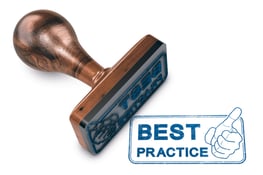
“Eighty percent of companies see a change in how their customers want to access and pay for goods and services, and 50 percent of these same companies are changing their pricing models as a result.” – The Economist
Life used to be simple, or maybe just simpler. People bought new cars every few years because car loans typically carried three-year terms. They traded in their old cars at dealerships. The manufacturers (they used to be called the “Big Three”) introduced new models every September, and crowds of people would go to the local  dealer on the day they were unveiled. It was an exciting period, but cars purchased three years earlier suddenly looks dated, and people thought about trading them in on new models. This used to be called “planned obsolescence,” although that is a loaded term and somewhat misleading.
dealer on the day they were unveiled. It was an exciting period, but cars purchased three years earlier suddenly looks dated, and people thought about trading them in on new models. This used to be called “planned obsolescence,” although that is a loaded term and somewhat misleading.
Leasing was a big part of the manufacturer’s business. The typical consumer did not even think about leasing a new car, but it was popular among rental car fleets and large corporations with their own fleets, or small businesspeople who preferred leasing because they needed a nice car (think real estate agents) and could deduct the whole thing on their taxes every year.
Today, things are different. About 30 percent of new car sales end up as leases and that number includes many consumers.
Auto Subscription Services Versus Depreciation
And now, there is something new called a “subscription service.” The Subscription Economy is a term coined by the CEO Tien Tzuo of Zuora, describing the new business landscape in which traditional pay-per-product companies are moving towards subscription-based models. How does that work, and how can dealerships benefit from it?
Here is a quote from Scott Painter, the chief executive of a company in this space called Fair, a used-vehicle leasing app.
“We aren’t lending consumers money to borrow an asset that is going to depreciate. We give consumers the ability to have a car without the complexity of ownership. Why get a loan for an asset that’s just going to  depreciate?”
depreciate?”
The value of subscription services is all about avoiding depreciation.
Jonathan Banks, vice president of Vehicle Valuations at J.D. Power, told Auto Finance News, “The market today is a good time for consumers to think about subscription services as an alternative.” This is because new cars can depreciate by as much as 40 percent over the first three years.
However, buying a car is an emotional purchase and consumers seldom think about depreciation while negotiating with dealerships — they are focused on getting a good deal and the monthly payment. Instead, they would be better served by thinking about the residual value or resale value of the car at the end of the lease or the bank loan.
AAA just published a study called “Your Driving Costs,” stating that this year’s cost of fuel, maintenance, repairs, insurance, license/registration/taxes, depreciation and loan interest for the average new car is — brace yourself — $8,849 per year! Depreciation is the biggest part of that, roughly $3,000 per year for the average vehicle. Moreover, as consumer preferences shift to SUVs and pickup trucks, the depreciation costs for sedans have risen.
Types of Auto Subscription Services
 Now let’s look at a couple of examples. First up is Cadillac’s version, called “Book.” Subscribers download the app and then select their preferred car (“I’ll take the CTS-V wagon, please,” already a collectible). The car is delivered to the specified address, and get this: subscribers can swap it out for other models, up to 18 times a year!
Now let’s look at a couple of examples. First up is Cadillac’s version, called “Book.” Subscribers download the app and then select their preferred car (“I’ll take the CTS-V wagon, please,” already a collectible). The car is delivered to the specified address, and get this: subscribers can swap it out for other models, up to 18 times a year!
Now for something a little more exciting, called “Porsche Passport.” There are two versions.
The first one costs $2,000 a month and subscribers get to “flip” their current car anytime they want with a choice of eight vehicles.
Version two costs $3,000 a month with a choice of 22 models, including sports and high performance vehicles. As I see it, this gives subscribers the advantages of having their own personal car collection, with every car being perfectly maintained and delivered by a concierge. And they don’t have to store, maintain, insure or manage a fleet of cars if they don’t have the garage space or budget to do so. In this respect, it’s more like renting than owning.
One day they might want to take the family on a vacation drive to the shore, so they need an SUV. The next day they want to go for a quick weekend drive in the mountains in a sports car. The next week they need a sedan to  transport business clients in the city. This program would works well, assuming one can afford $36,000 per year in fees.
transport business clients in the city. This program would works well, assuming one can afford $36,000 per year in fees.
Another approach is targeted at the lower end of the market such as a subscription for a used car valued at around $15,000 where the subscription price is around $600 – $800 a month. This would work for certain segments that cannot afford a down payment or repairs or maintenance, such as college students who are just in town for the school year.
Manufacturer Risks
As you might imagine, the manufacturer is holding some risk here. First, the customer could be a bad driver, or to put it another way, “accident-prone.” They definitely want to weed those people out, but that can be done with access to the insurance company database. Second, they want to establish creditworthiness. There is existing software to qualify consumers for loans or leases. Another avenue is to qualify customers based on a major credit card (the rental car model), but this has risks. The safest way is to require a deposit which can be applied towards the payment, kind of like a down payment.
Best Practices
There is a company called “Chargify” that sells subscriptions, and they have a couple of important tips. First, align the product with a purpose (this is the hardest part to figure out). This is probably easier for sellers of luxury, high-end cars than it is for low-end sedans. Second, have a high quality product and a seamless user experience.
They believe that subscription marketing works best for millennials (people born from 1980 – 2000). It turns out that there are about 75 million of them, with an annual buying power of $600 billion. It’s estimated that in 2020, millennials will spend $1.4 trillion annually! Millennials are called the “access generation” because they value  access over ownership. Subscription products also offer “ultra-personalization” that millennials are looking for, and they want to align brands and products that fit their personality.
access over ownership. Subscription products also offer “ultra-personalization” that millennials are looking for, and they want to align brands and products that fit their personality.
In the subscription economy, Tzuo says, every company must do a better job of managing a direct, complex, responsive, multi-channel relationship with its customers. The focus shifts from the product to the customer, and monetizing long-term relationships rather than just shipping a product. The subscription experience is a relationship. It takes place over a long time period, hopefully. It’s all about the relationship, not the product so much.
Merchant Relationships
Here at CrossCheck, we believe in relationships too. Many of our customers have been with us for decades. They have tried other payment guarantee companies, but have found that sometimes those companies don’t approve as many high-dollar checks, or don’t pay claims, or have bad customer service. Even when they leave for a lower  price, they usually come to CrossCheck because the two big companies that are our competitors do not make customer service a priority.
price, they usually come to CrossCheck because the two big companies that are our competitors do not make customer service a priority.
But we also provide excellent customer service for the person writing the check. While some check guarantee companies flag high-dollar checks and ask merchants to provide more details about the purchase, we do an online approval in seconds. Here is quick overview of CrossCheck’s electronic check processing.
Our merchant — a car dealer, for example — swipes the check through the imager and gives it back to the consumer with a receipt. We batch out and do the banking for the dealer, so they don’t have to leave the store to go to the bank, and we put the funds in their account. We keep them whole in the event of a bounced check so they never have to worry about that either — that’s the guarantee factor.
For us here at CrossCheck, it’s all about the customer service. This year we will process over three billion dollars’ worth of checks, most of them for car dealers and the auto aftermarket. When they “subscribe” to our service, we make the consumer happy and we give the dealer peace of mind. Now that’s a relationship!
Learn how electronic check processing can help increase revenue and mitigate risk while saving time and money at your dealership by downloading our free guide.



